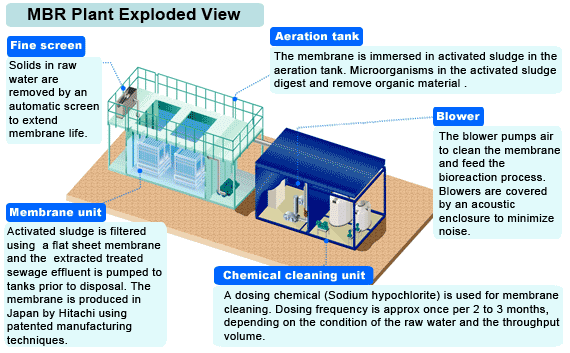MBR system uses an advanced treatment technology that produces high quality reuse water at a competitive cost. It can be utilised on small and medium sized plants; ideal as a solution for customers looking to save space.

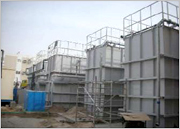
Membrane Bioreactor (MBR) is a process that combines a membrane ultra / micro filtration process and activated sludge process. (The MBR process is used in place of the secondary sedimentation tank and sand filter used for tertiary treatment in the conventional activated sludge process.) Hitachi Aqua-Tech Membrane Sewage Treatment Plant provides features such as space saving, easy operation and high quality treated water which is reusable. In addition, advanced treatment of nitrogen and phosphorus removal can be achieved by anoxic / aerobic treatment. According to customer requirements and site conditions, Hitachi Aqua-Tech offers two types of MBR Plants to customers. Hitachi Aqua-Tech has successfully built our MBR plants in Maldives, Seychelles, Tanzania, Thailand, Malaysia, Indonesia and Myanmar.
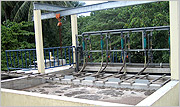
Site constructed concrete tanks. This type of plant reduces shipment cost by construction concrete tanks on-site and also makes customerisation easier to suit site conditions.
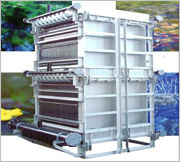
This system consists of major components installed in pre-fabricated steel tanks (aerobic tank with or without anoxic tank depending on requirements).
Hitachi Aqua-Tech uses high quality membranes manufactured by Hitachi Ltd. Compared with membranes from other suppliers, the Hitachi Compact MBR has the following advantages:
In the MBR process, raw sewage from equalisation or holding tank first passes through fine screens to remove substances that may clog or scratch the membrane before going into the MBR facilities.
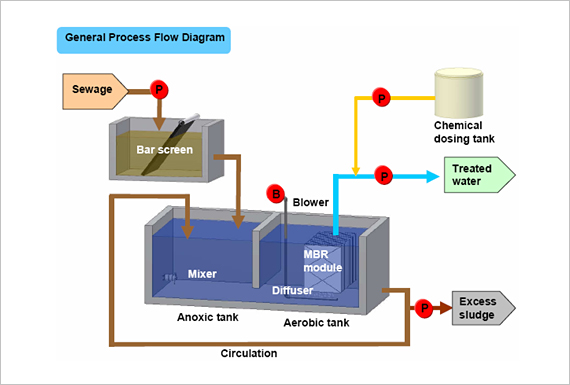
In order to meet more stringent reuse requirement, which is beyond what can be accomplished by conventional sewage treatment plant; a tertiary treatment (filtration) are incorporated when requested, to further polish the secondary treated water.
The membrane bioreactor facility consists of aerobic tank and anoxic tank. Membrane modules are immersed inside the aerobic tank where organic contents (BOD) in the sewage will be biologically degraded by activated sludge. The MLSS (Mixed Liquor Suspended Solid) concentration in the MBR System is 10 to 20 g/L compared to 3 to 4 g/L in conventional activated sludge systems, thus the retention time required is only 30% of conventional system. The membranes also separate suspended solids from liquid through the filtration process. As the pore size of the membrane is 0.1 micron, not only suspended solids but also bacteria such as coliform bacteria are also removed. The immersed membrane filtration process also eliminates the requirement for gravity sedimentation tank or clarifier required by conventional activated sludge systems. Through recirculation of MLSS from aerobic tank to anoxic tank, nitrate content is removed. Additional coagulant and flocculant dosing also can be incorporated for phosphorous removal.
